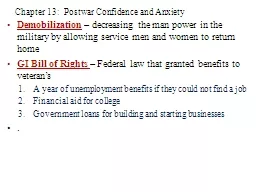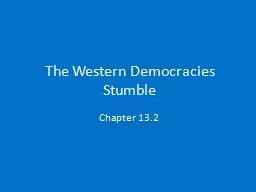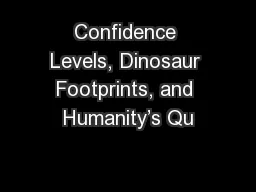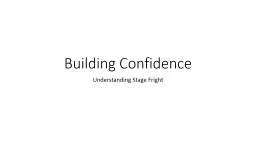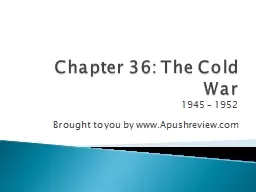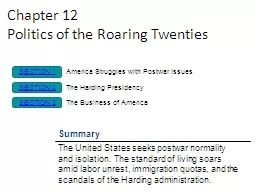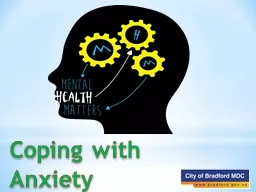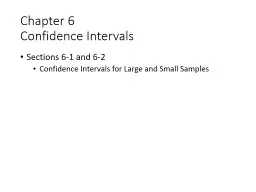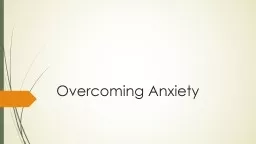PPT-Chapter 13: Postwar Confidence and Anxiety
Author : yoshiko-marsland | Published Date : 2018-09-24
Demobilization decreasing the man power in the military by allowing service men and women to return home GI Bill of Rights Federal law that granted benefits to
Presentation Embed Code
Download Presentation
Download Presentation The PPT/PDF document "Chapter 13: Postwar Confidence and Anxi..." is the property of its rightful owner. Permission is granted to download and print the materials on this website for personal, non-commercial use only, and to display it on your personal computer provided you do not modify the materials and that you retain all copyright notices contained in the materials. By downloading content from our website, you accept the terms of this agreement.
Chapter 13: Postwar Confidence and Anxiety: Transcript
Download Rules Of Document
"Chapter 13: Postwar Confidence and Anxiety"The content belongs to its owner. You may download and print it for personal use, without modification, and keep all copyright notices. By downloading, you agree to these terms.
Related Documents

